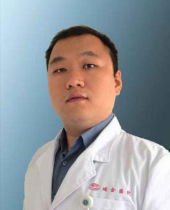


Time:11:40-12:00 Dec. 21
Neuromorphic Chip Model of Neuromuscular
Control for the Compliant Control of Prosthetic Hand
Assoc. Prof. Chuanxin Niu
Ruijin Hospital, Shanghai Jiao Tong University, School of Medicine, China.
Biography:
牛传欣,博士,副研究员。现就职于上海交通大学医学院附属瑞金医院, 任康复医学科研实验室负责人,兼任上海交通大学 Med-X 研究院神经康复工程实验室副主任。2006 年毕业于北京理工大学电子工程系,2010 年博士毕业于美国伊利诺伊大学及芝加哥康复研究院(Rehabilitation Institute of Chicago),2010-2014 年于美国南加州大学(University of Southern California)运动康复系担任博士后研究员,长期专注人体运动控制、神经运动障碍的研究。在康复医工交叉领域的器械化康复评定与智能化康复治疗方面陆续开展了科研工作。现为多个康复领域 SCI 期刊评审人,并担任麻省理工学院出版社特邀评审。担任中国康复医学会康复治疗专业委员会委员,中国生物医学工程学会康复工程分会青年委员,上海市医学会物理医学与康复学专科分会青年委员等学术职位。获国家资助的研究方向集中于脑卒中神经康复技术、神经假肢手的仿生柔顺控制。现承担国家自然科学基金青年项目 1 项(编号 81501570),作为第二责任人参加国家自然科学基金重点项目 1 项(编号81630050),作为骨干人员参加科技部变革性技术关键科学问题重点研发计划 1 项(编号 2017YFA0701103)。
Abstract:
Under spinal reflex and other neural activities, humans are capable of resisting external perturbations on the hand while grasping objects of variant sizes, stiffness, and brittleness. As a contrast, artificial hands do not have the reflexive or compliant features comparable to human hands, primarily because traditional artificial hands are controlled in fundamentally different schemes from human motor control. In order to facilitate the biomimetic motor control of prosthetic devices, our team has been refining a "Virtu- al Reflex (VR)" model over the past decade. We now have a VR model characterizing physiologically realistic spinal circuitry, muscles, skeletons, and joints – all of which key elements for re-animating human motor control. Nevertheless, the VR model can only be evaluated slowly in MATLAB Simulink for offline analyses, meaning the computations are too costly to install in real-time applications. Recently, we have succeeded in implementing the VR model using neuromorphic technology, which accelerates the evaluation of VR model such that 1ms of data can be generated within 1/10ms, i.e., from slow- er-than-real-time to "hyper-time". This breakthrough allows for real-time control of prosthetic hand using principles of human motor control, which follows that the reflexive and compliant features of human hands can be replicated. At present, our team has implemented more than 500 motoneurons driving a tendon-driven prosthetic hand in real-time; this setup has also achieved grasping objects of different shapes, weights, and stiffness. This presentation will introduce the principles of neuromorphic chip tech- nology, the challenges and advances of VR models during its hyper-time improvement, and the ongoing tests for the functionality of biomimetic prosthetic hands.
